A Public-Health Crisis
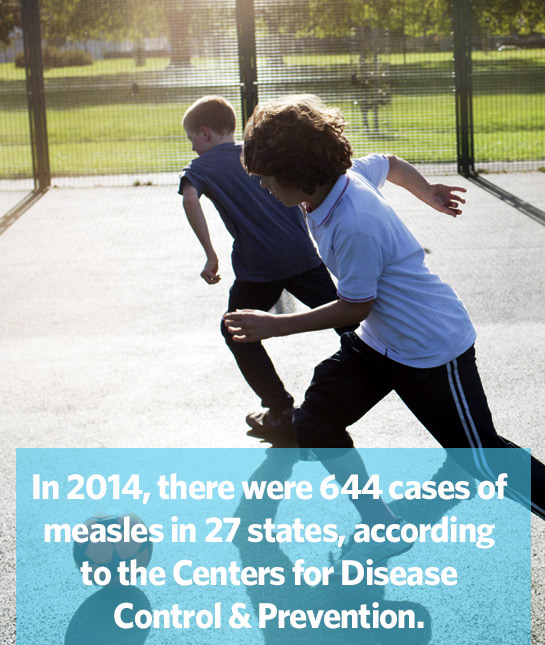
After being officially eradicated from the United States in 2000, measles is back with a vengeance. According to the Centers for Disease Control and Prevention, in 2014, there were 644 cases in 27 states; as of February 20, there have been 154 people infected in 17 states (and Washington, D.C.) so far. This public-health crisis is—rightfully—filling many parents with fear, and shining a harsh light on the so-called “anti-vaxxers” who refuse to immunize their children out of fear that vaccines will cause autism, among other reasons.
To break through the high emotions that this subject stirs up, mom.me spoke to Marietta Vázquez, MD, an associate professor of pediatrics in the pediatrics department—specializing in infectious diseases—at Yale to answer the most critical questions and get the facts about this highly contagious illness.
Wasn’t Measles Eradicated From the U.S.?
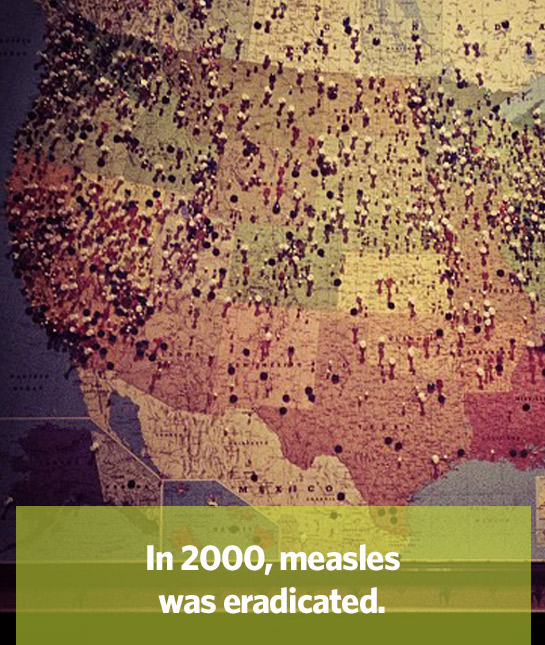
“Yes. The U.S. declares a disease as being eliminated after 12 months without a reported case,” says Dr. Vázquez. “In 2000, it was eradicated, and most of the cases we’re seeing in this current outbreak are unvaccinated individuals. We’re seeing a growing number of parents who are refusing the MMR immunization for their kids because of religious or philosophical reasons.”
Image via Twenty20/cerlaco
Who Is Catching Measles and Why?
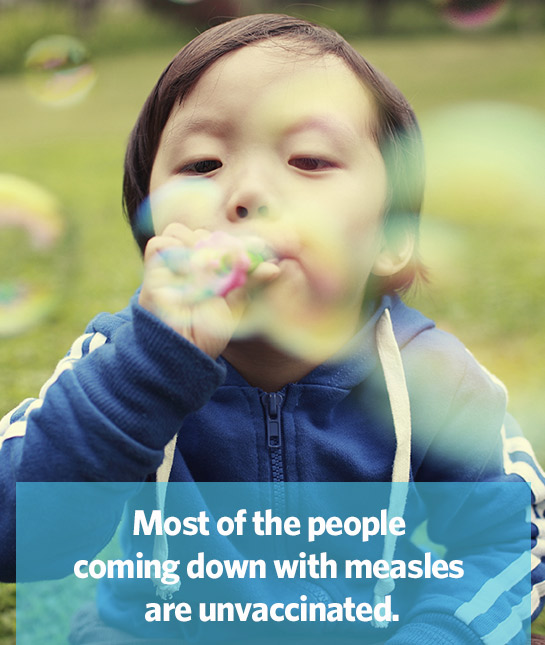
“First off, I want to say that I think that the outbreaks are worrisome,” says Dr. Vázquez. “Most of the people coming down with the disease were unvaccinated. Personally, and as a public-health professional, I can’t stress enough how important it is to make sure you and your children are immunized.”
How Communicable Is Measles?
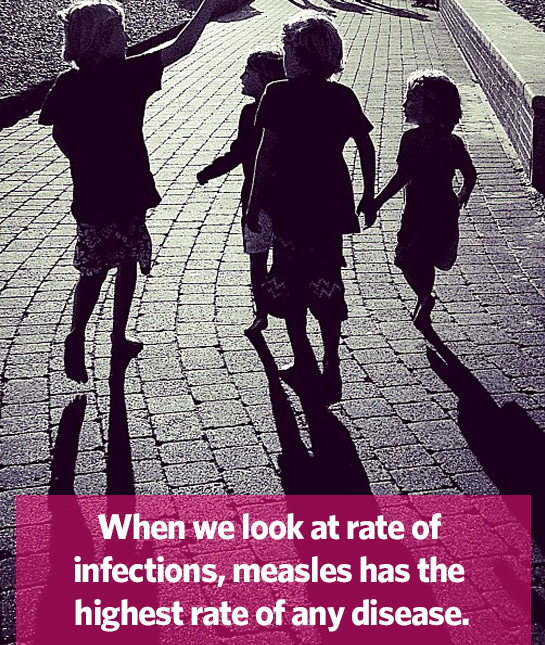
“When we look at rate of infections, measles has the highest rate of any disease,” says Dr. Vázquez. “It is spread through the air as well as through direct contact, and 9 out of every 10 individuals who are exposed—people that don’t have immunity—come down with the disease. That is extremely high. To get the common cold or influenza, for example, you need to have direct contact with someone who is infected, you have to exchange bodily fluids. Someone entering a room after a person infected with measles can catch it. Measles is so communicable that someone who hasn’t yet come down with the symptoms can still be infectious.”
Image via Twenty20/jgmango
What Are the Symptoms of Measles?
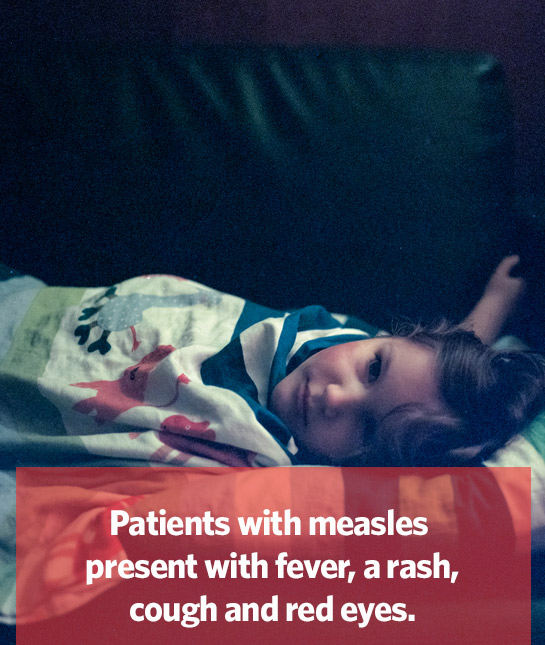
__“__Patients with measles present with fever, a rash, cough, coryza (red, itchy, runny nose) and red eyes (conjunctivitis),” says Dr. Vázquez. “If a case appears to be measles, we ask about international travel, contact with infected people. Then, we obtain specimens for testing. When it appears to be measles, we want to be sure; it’s important to prevent hysteria.”
What Is the Incubation Period?
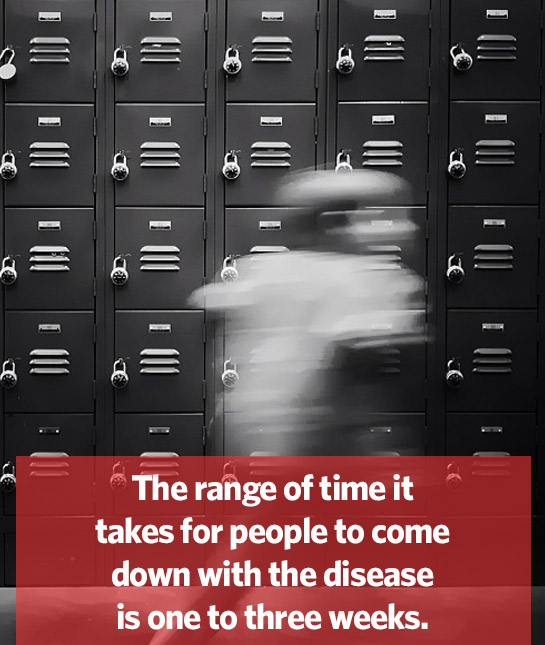
“Per the CDC, from the time a person is infected, the range of time it takes for them to come down with the disease is one week to three weeks, and it generally appears in two weeks,” says Dr. Vázquez. “An infected individual can be infectious from four days before they develop symptoms—things like the tell-tale rash or fever—to four days after. Thus, kids who are exposed need to be quarantined to prevent the spread of measles.”
Image via Twenty20/andrewjhays
How Seriously Is the U.S. Government Taking This Outbreak?
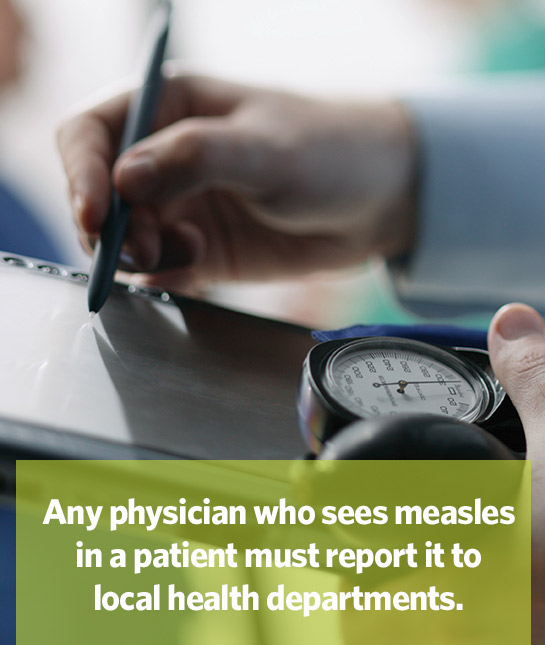
“It is a reportable disease,” says Dr. Vázquez. “Any physician who sees it must report it to their local health departments, because it is so difficult to contain and treat. The CDC will help with treatment and diagnoses. These are the agencies that we look to for real-time information about its spread.”
What Is the Treatment?
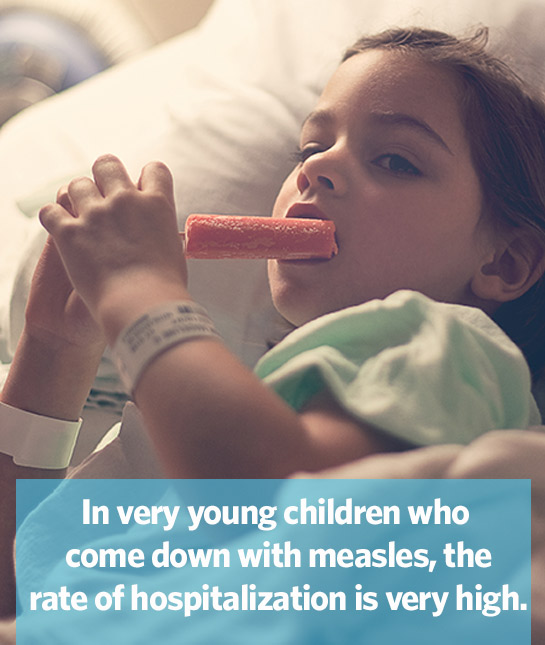
"It's really supportive—since measles is a virus, there realIy isn’t any medication we can give,” says Dr. Vázquez. “The treatment depends upon what other related illnesses a patient has. If they have pneumonia, they might need oxygen. People with bad, complicated ear infections may end up with drainage tubes in their ears. Tylenol can be given to relieve fever, fluids to prevent dehydration. Patients are sick for about two to three weeks. In very young children who come down with measles, the rate of hospitalization is very high.”
How Early Can Kids Be Immunized?
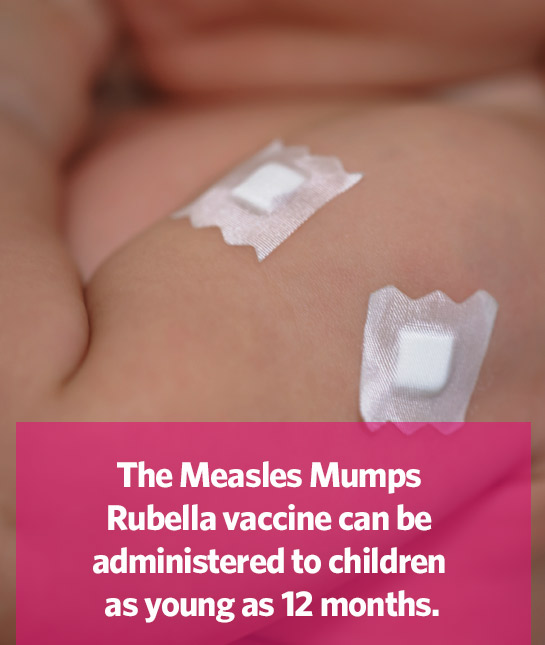
“The MMR vaccine—measles, mumps and rubella—can be administered to children as young as as 12 months; another dose is then given at 4 years,” explains Dr. Vázquez. “For kids who are traveling internationally to places where measles exist, it can be given earlier, at 6 months.” Dr. Vázquez says it’s important to note that “one in 12 kids in the U.S. are not getting their MMR vaccine on time, [and] delaying the vaccine is leaving the children vulnerable.”
What’s the Success Rate of the Vaccine?
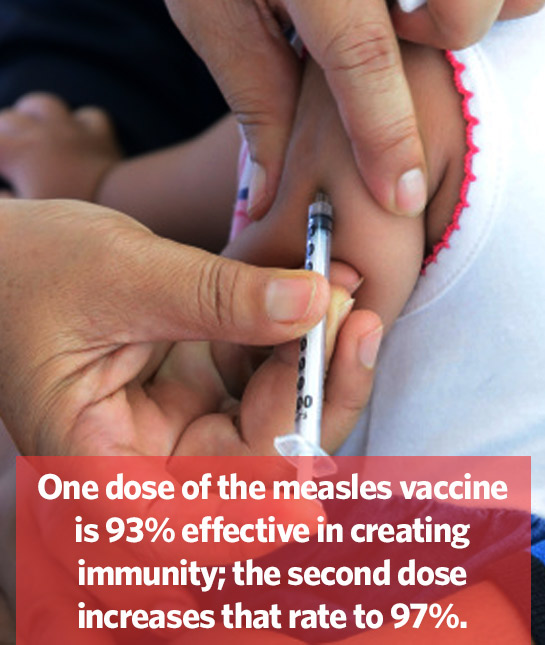
“It is highly effective. One dose of measles vaccine is 93 percent effective in creating immunity; the second dose bumps that rate up to 97 percent,” says Dr. Vázquez. “It is very safe and very effective. The vaccination program is a bit of a victim of its own success. People haven’t experienced these diseases in their lifetimes, and we need to remember how very dangerous they are. Nationwide immunization of children is the single best public-health advance of the last century. We are preventing diseases that have the potential to kill many kids.”
MORE: I'm a Vaccine-Wary Mom
How Do You Approach Parents Who Are Afraid to Vaccinate Their Children?
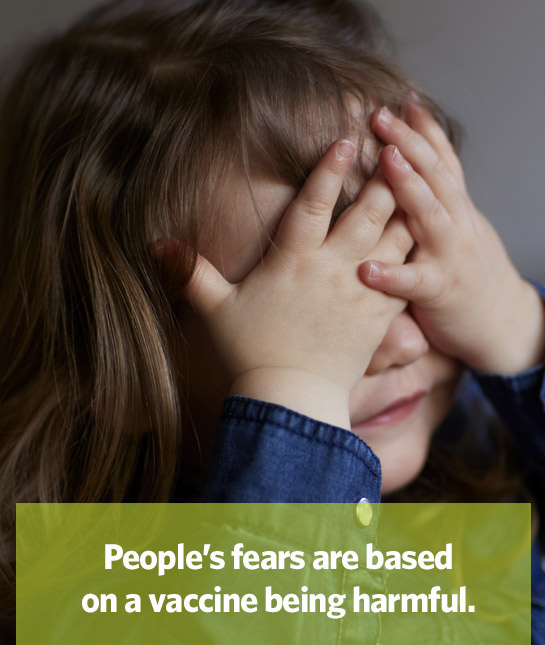
“I listen to their specific concerns,” says Dr. Vázquez. “Is it one in particular or all vaccines? Is it because a friend had a bad reaction? I think it is very important to understand where a patient is coming from. My job is to give them the information to make the right decision … also to understand the risk. People’s fears are based on a vaccine being harmful. I tell them about the real risks and morbidity. This needs to be a real discussion. Common complications of measles include ear infections (10 percent of kids who get measles will also get ear infections; and 10 percent of those cases will end in deafness); one out of 20 kids with measles will get pneumonia, which is the biggest cause of death, and there is also a risk of encephalitis. The point of this is not to scare parents, but to fully inform them.”
Are There Any Potential Long-Term Effects of Measles?
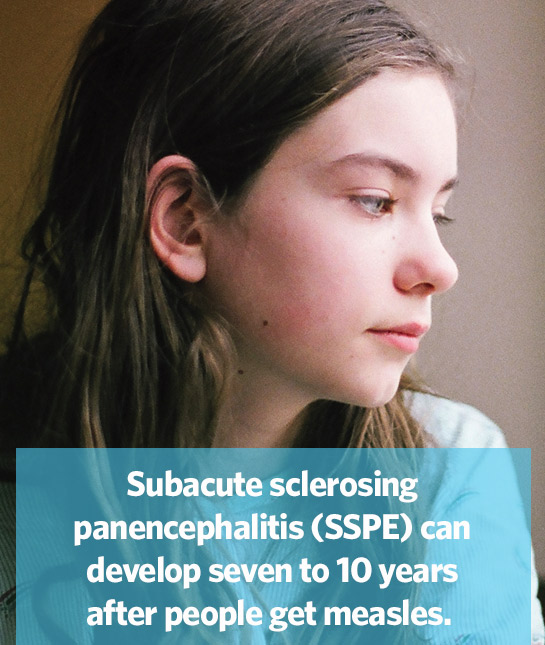
“This doesn’t happen to all individuals, but there is something called subacute sclerosing panencephalitis (SSPE),” says Dr. Vázquez. “This can develop seven to 10 years after people get measles. It is a progressive form of encephalitis, and it often leads to death. We’re going to start seeing more and more of these cases in the coming years.”
What Is the Worst Outcome of Measles in Kids?

“For every 1,000 kids who get measles,” says Dr. Vázquez, “one or two will die.”



